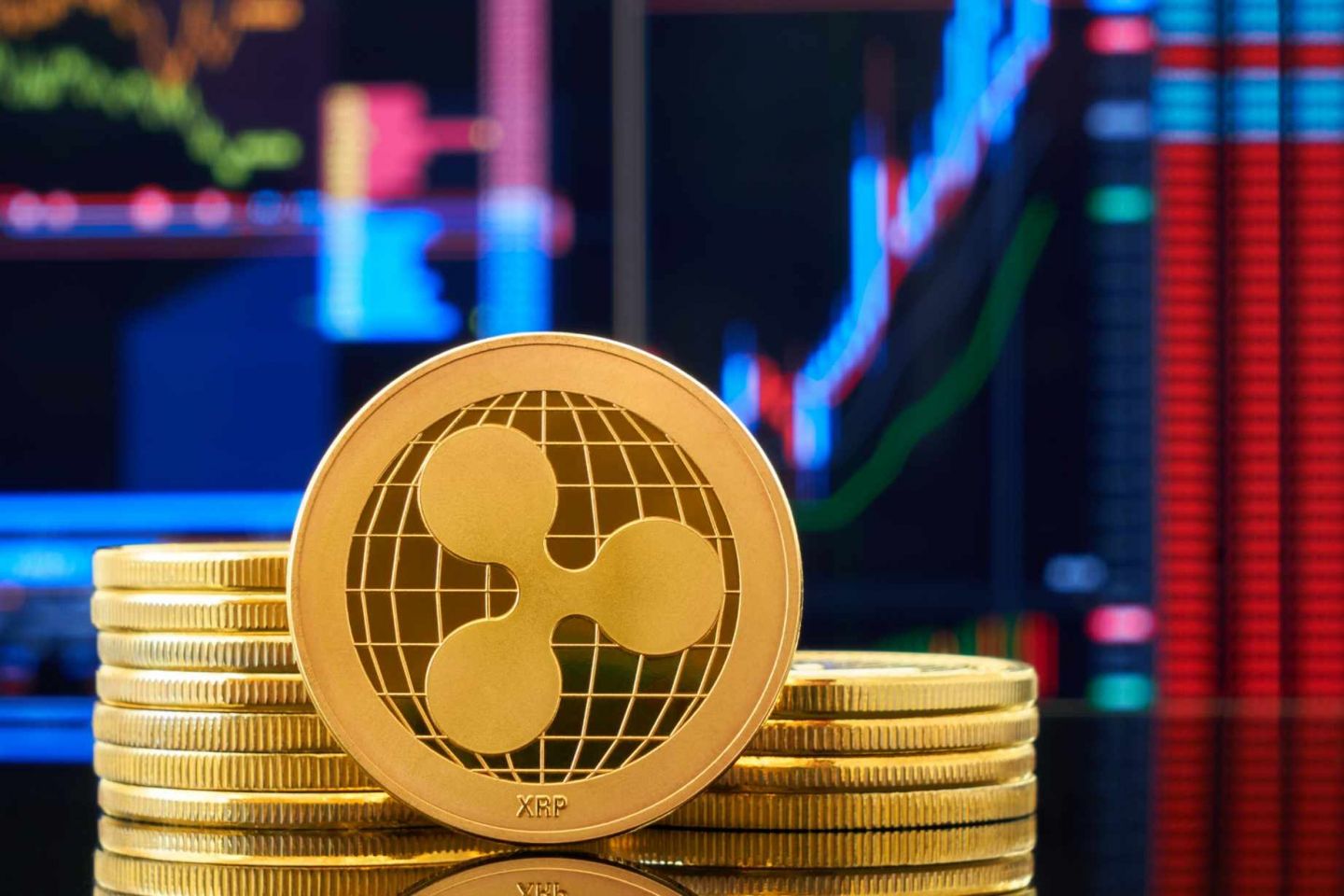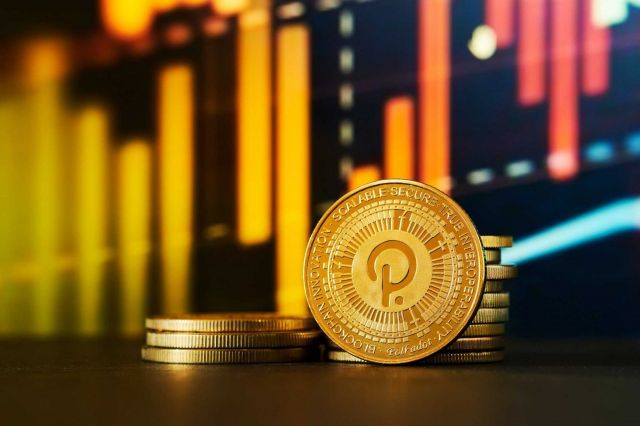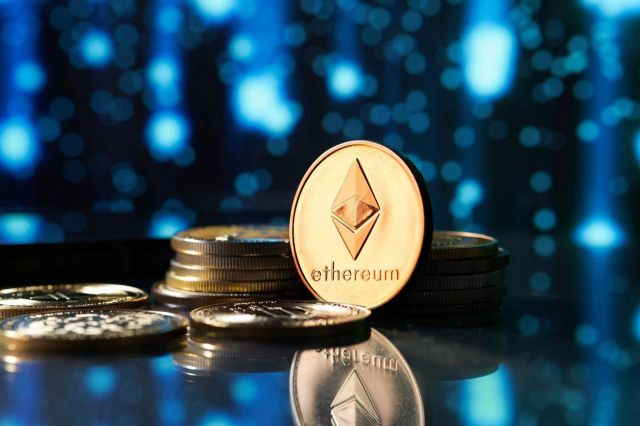What is Ripple (XRP)? A trader’s guide

Learn all about Ripple and the XRP price history, including tokenomics, and how to trade XRP/USD via CFDs.
What is Ripple?
Ripple is a digital payment protocol and cryptocurrency which operates on the XRP Ledger (XRPL), a blockchain created by David Schwartz, Arthur Britto and Jed McCaleb. Its cryptocurrency is called XRP.
Ripple Labs is a private company that develops and maintains XRP and the XRP Ledger, established to improve the efficiency of cross-border payments. As a result, some have proposed Ripple as a complement or alternative to existing systems like SWIFT.
Although the XRP Ledger (XRPL) operates as a decentralised blockchain network, Ripple Labs remains influential within its ecosystem. It has significant control over the XRP supply, owning a large reserve of the token, much of which is locked in escrow and released periodically.
As of December 2024, XRP consistently ranks within the top 5–10 largest cryptocurrencies by market capitalisation.1
How does Ripple work?
Ripple is designed to facilitate fast, cost-effective and reliable cross-border transactions for financial institutions and individual users.
The network operates on the XRP Ledger, which has a consensus mechanism that involves a recommended Unique Node List (UNL). Validators, which include financial institutions and independent entities, must agree on the validity and order of transactions to maintain the ledger's integrity. While Ripple Labs provides a default UNL, users can customise their validator preferences.
Ripple is capable of processing transactions within seconds, with fees typically less than a fraction of a cent. Its ability to process payments quickly and affordably has led to comparisons with SWIFT, but Ripple is better seen as a complement rather than a direct replacement.
XRP acts as a bridge currency for transferring value between fiat currencies. Financial institutions can use RippleNet infrastructure with or without holding XRP. XRP's tokenomics include a deflationary mechanism where a small amount of XRP is burned per transaction, though the total effect on the circulating supply is minimal.
Ripple Labs holds a significant portion of XRP supply in escrow. These reserves are released in limited amounts periodically to provide liquidity while mitigating oversupply risks. While this centralisation has sparked debates, it also offers predictability appealing to institutional users.
What’s the XRP price history?
The XRP price history includes significant growth, regulatory challenges and broader cryptocurrency market trends.
XRP launched in 2012, intended as a digital currency for fast and cost-effective cross-border transactions. With limited visibility and adoption in its early days, XRP started trading at fractions of a cent. Ripple Labs – the developer of Ripple – was founded in 2013, and XRP began to gain traction as the cryptocurrency market grew. However, XRP hit its all-time-low on 7 July 2014.2
A turning point came in 2017, when XRP entered a period of explosive growth during the ‘cryptocurrency boom’. The XRP price surged higher in 2017 after Ripple Labs announced exploratory partnerships with financial institutions such as American Express and Santander, which sparked initial interest in XRP's potential use case, though large-scale adoption did not materialize at the time.
XRP reached its all-time high of $3.84 on 4 January 2018, amid a broader market frenzy driven by speculative trading and the ICO boom. However, the euphoria was short-lived as the cryptocurrency market declined in 2018. The XRP price followed suit and its price decreased significantly throughout the year, influenced by regulatory scrutiny increased and bearish market sentiment.
Past performance is not a reliable indicator of future results.
In December 2020, the US Securities and Exchange Commission (SEC) filed a lawsuit against Ripple Labs. The SEC claimed that XRP was an unregistered security, which contributed to a decline in XRP's price as exchanges began delisting the token amid regulatory concerns.
The broader crypto market recovered in 2021 and positive developments in Ripple Labs’ legal battle against the SEC helped boost market confidence. By April, the XRP price grew alongside optimism surrounding a potential favourable outcome.
Volatility marked the XRP price history during 2022, due to the ongoing proceedings and broader market conditions. The SEC lawsuit continued to weigh on sentiment, but periodic positive court rulings for Ripple provided temporary boosts to the price.
The legal proceedings saw positive developments for Ripple in 2023, when a US court ruled that XRP was not a security when sold on exchanges or through programmatic sales. This led to a substantial XRP price increase. However, institutional sales of XRP were treated differently under the ruling.
Entering 2024, changes in regulatory sentiment in the United States – including leadership changes at the SEC – created a more favourable environment for the cryptocurrency market. Meanwhile, Ripple emerged victorious in key legal battles as anticipation surrounding new Ripple products such as RLUSD contributed to XRP price increases.
Which factors might influence the XRP live price?
The price of XRP could be affected by a number of factors, from regulatory developments, to partnerships and cryptocurrency market sentiment. Here are a few of them:
Regulatory landscape
XRP's price has historically been sensitive to regulatory actions. In December 2020, the US Securities and Exchange Commission (SEC) filed a lawsuit against Ripple Labs, alleging that XRP was an unregistered security. This influenced a large decrease in XRP's price as exchanges delisted the token. Then in July 2023, Ripple achieved a partial victory when a US court ruled that XRP was not necessarily a security when sold to retail investors, resulting in a significant price rise as market sentiment increased.
Partnerships and adoption
Ripple Labs’ partnerships with banks and payment providers can directly impact XRP demand. June 2024, Ripple expanded its partnership with Archax, intending to bring hundreds of millions of dollars of tokenised real-world assets onto the XRP Ledger (XRPL) over the coming year. Conversely, a lack of substantial new partnerships or the loss of existing ones could signal slowed progress, potentially eroding market sentiment and pushing prices lower.
Market sentiment and broader trends
XRP is a coin that historically moves in tandem with the overall cryptocurrency market. For example, its price rose significantly after the US presidential election in November 2024. XRP’s price increase was attributed to expectations of more lenient regulation under the new administration, and a spotlight on cryptocurrencies due to the proposal of a national US bitcoin (BTC) reserve. Conversely, during bearish market phases, even positive news may have limited impact on XRP's price as overall trader sentiment remains subdued.
Tokenomics and supply dynamics
Ripple's supply mechanics have influenced XRP’s price movements in the past. Ripple Labs holds a significant portion of XRP in escrow, releasing it periodically. As of December 2024, Ripple Labs holds approximately 37.24 billion XRP3 in its accounts. Ripple releases up to one billion XRP per month from escrow to maintain supply dynamics, though unutilised portions are returned to escrow, potentially mitigating oversupply concerns.
Learn more about the potential future of Ripple and XRP prices, discover price targets and analysts’ commentary in our latest XRP price predictions.
What are the XRP trading hours?
XRP operates on a decentralised blockchain network that is active 24 hours a day, seven days a week. This means you can trade XRP at any time, including weekends and holidays.
- Cryptocurrency exchanges – many exchanges facilitate 24/7 trading, allowing for continuous market participation.
- Online trading platforms – some reliable and trusted brokerages provide XRP trading via CFDs.
If you choose to trade CFDs, you can follow the XRP performance live in US dollars with our comprehensive XRP/USD price chart.
Alternatively, you can check out our XRP/EUR and XRP/BTC price charts.
Monitoring the cryptocurrency’s activity can help you to keep an eye out for any key fundamental or technical events that may affect short-term movements in its value.
How to trade XRP
XRP is a cryptocurrency, meaning that it can be traded directly on a cryptocurrency exchange or through peer-to-peer transactions. Traders may also choose to trade XRP via a derivative, a financial product that takes (or ‘derives’) its value from the price of the underlying asset.
You could use a contract for difference, or CFD, to trade on the price of XRP pairs. A CFD is a contract, typically between a broker and a trader, where one party agrees to pay the other the difference in the value of a security, between the opening and closing of the trade.
You can use CFDs to trade on whether you think an XRP pair will rise (called ‘going long’) or fall (‘going short’). CFDs give you access to leverage, allowing larger positions with a relatively small outlay. This amplifies your potential profits, but also your potential losses, making CFD trading risky.
You can learn more about trading cryptocurrencies with Capital.com in our comprehensive guide to cryptocurrency trading.
Aside from CFDs, you can also trade XRP pairs through instruments like futures, options, ETFs, and mutual funds. Each offers an alternative to the leveraged trading of CFDs, suiting different risk profiles and strategies.
Want to learn more about crypto trading? Explore our step-by-step crypto course designed to help you understand the basics to the advanced concepts.
FAQs
What is XRP and who founded it?
XRP is the cryptocurrency associated with the Ripple network. Ripple operates on the XRP Ledger, a blockchain that’s designed to enable fast and low-cost cross-border payments. It was created by Jed McCaleb and Chris Larsen, with David Schwartz contributing, and launched in 2012. Ripple Labs develops the Ripple network and the XRP Ledger, which use a unique consensus protocol validated by a pre-approved list of trusted nodes.
Who owns the most XRP?
The largest holders of XRP are Ripple Labs itself, which controls a significant portion of the supply, most of it held in escrow with the intent of ensuring gradual and predictable token releases. Beyond Ripple Labs, XRP is held by major cryptocurrency exchanges, institutional investors and individual traders. This centralisation of holdings has sparked controversy within the cryptocurrency community.
What’s the maximum supply of XRP?
XRP has a maximum supply of 100 billion tokens, all of which were pre-mined at the network's inception. Unlike many cryptocurrencies, XRP cannot be mined or staked for new issuance. Instead, its supply is gradually reduced through a deflationary mechanism that burns a small amount of XRP with each transaction.
How does XRP differ from bitcoin (BTC)?
XRP and BTC serve distinct purposes. BTC is a decentralised store of value and medium of exchange, operating on a Proof-of-Work (PoW) mechanism, which can be energy-intensive. In contrast, XRP focuses on fast, low-cost cross-border payments for financial institutions, using a consensus protocol with trusted validators. This makes XRP faster and more energy-efficient than BTC but also introduces debates about centralisation.
Visit our other complete guides

How to trade Polkadot
